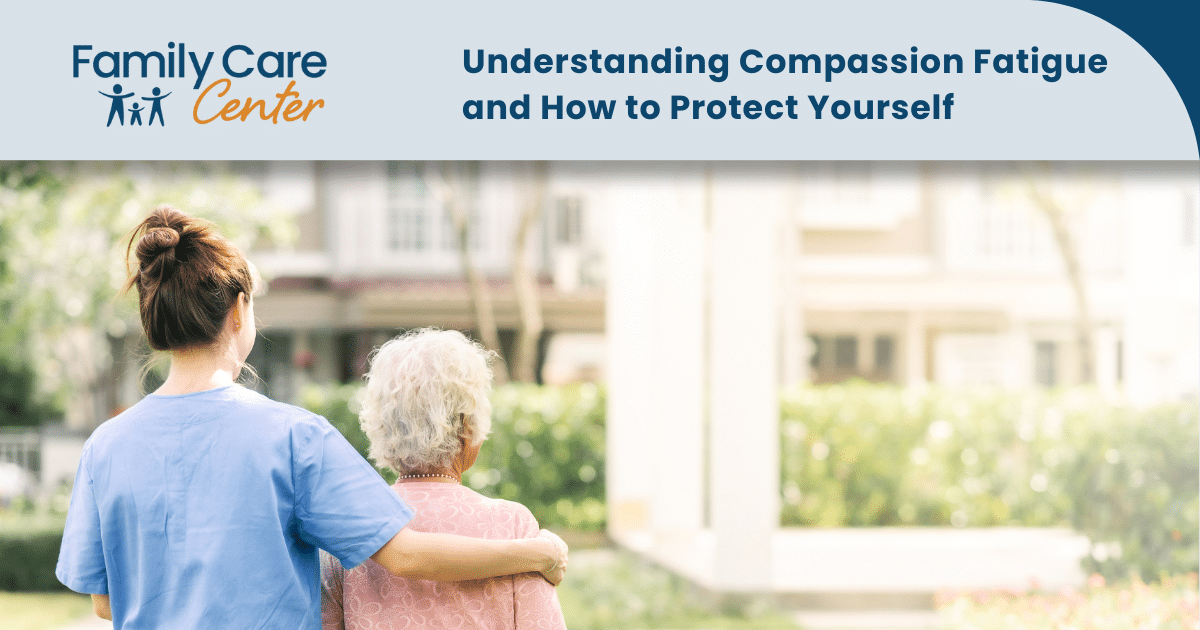If you work in a setting where you’re regularly exposed to other people’s trauma—whether in a hospital, a mental health clinic, or another helping profession—you know how meaningful and rewarding that work can be. But you also know it can take a toll. Day after day, the emotional weight of supporting people through their struggles can start to wear you down.
This deep, persistent kind of exhaustion—physical, emotional, and mental—is known as compassion fatigue.
What is compassion fatigue?
Compassion fatigue is a type of stress that comes from caring for others who are struggling or traumatized. You might hear it called secondary or vicarious trauma.
Compassion fatigue can show up in subtle and not-so-subtle ways, including:
- Emotional withdrawal
- Reduced empathy
- Physical health problems
- Cognitive difficulties
- Mood swings
Unlike burnout, which is usually linked to job stress, compassion fatigue can affect every part of your life. It can leave you feeling overwhelmed, emotionally exhausted and even experiencing symptoms similar to PTSD.
The difference:
- Compassion fatigue → Impacts work and home life, feels emotional, needs increased support.
- Burnout → Mostly work-related, feels physical, often improved by time away from the job.
The 5 stages of compassion fatigue
- Zealot Phase – You’re energized, committed, and eager to make a difference.
- Irritability Phase – Enthusiasm fades; mistakes and frustration creep in.
- Withdrawal Phase – Exhaustion blurs work and personal boundaries; relationships suffer.
- Zombie Phase – Disconnection, self-doubt, and projecting negativity onto others.
- Pathology Phase – Feeling overwhelmed, ill, or even leaving the profession entirely.
Risk and protective factors
Compassion fatigue can be influenced by life experiences, trauma history, gender, age, empathy levels, job location, and the demands of mental health care.
Protective habits include:
- Practicing self-care
- Maintaining social connections
- Staying mindful
- Building a supportive community
Completing the stress cycle
Stress isn’t just in your head — it’s in your body and needs to be released. You can “complete the cycle” by:
- Connecting socially
- Exercising
- Laughing
- Crying
- Sharing physical affection
- Practicing deep breathing
Treating compassion fatigue
If you feel yourself starting to experience burnout or compassion fatigue symptoms, it is okay to step back and do what you need to do to support your own mental and physical needs. Compassion fatigue can hit fast and hard, but it’s not unbeatable.
Recognizing the signs of compassion fatigue, honoring your own emotional boundaries, and investing in your self-care not only safeguards your well-being but also preserves your ability to care for others with resilience.
As always, self-care strategies can go a long way, but you don’t have to manage compassion fatigue on your own. If you’re finding it hard to bounce back—or you notice signs of depression, anxiety, or intense, ongoing stress—consider reaching out to a mental health professional. Getting support isn’t a sign of weakness; it’s a step toward protecting your well-being and preserving your ability to care for others.





